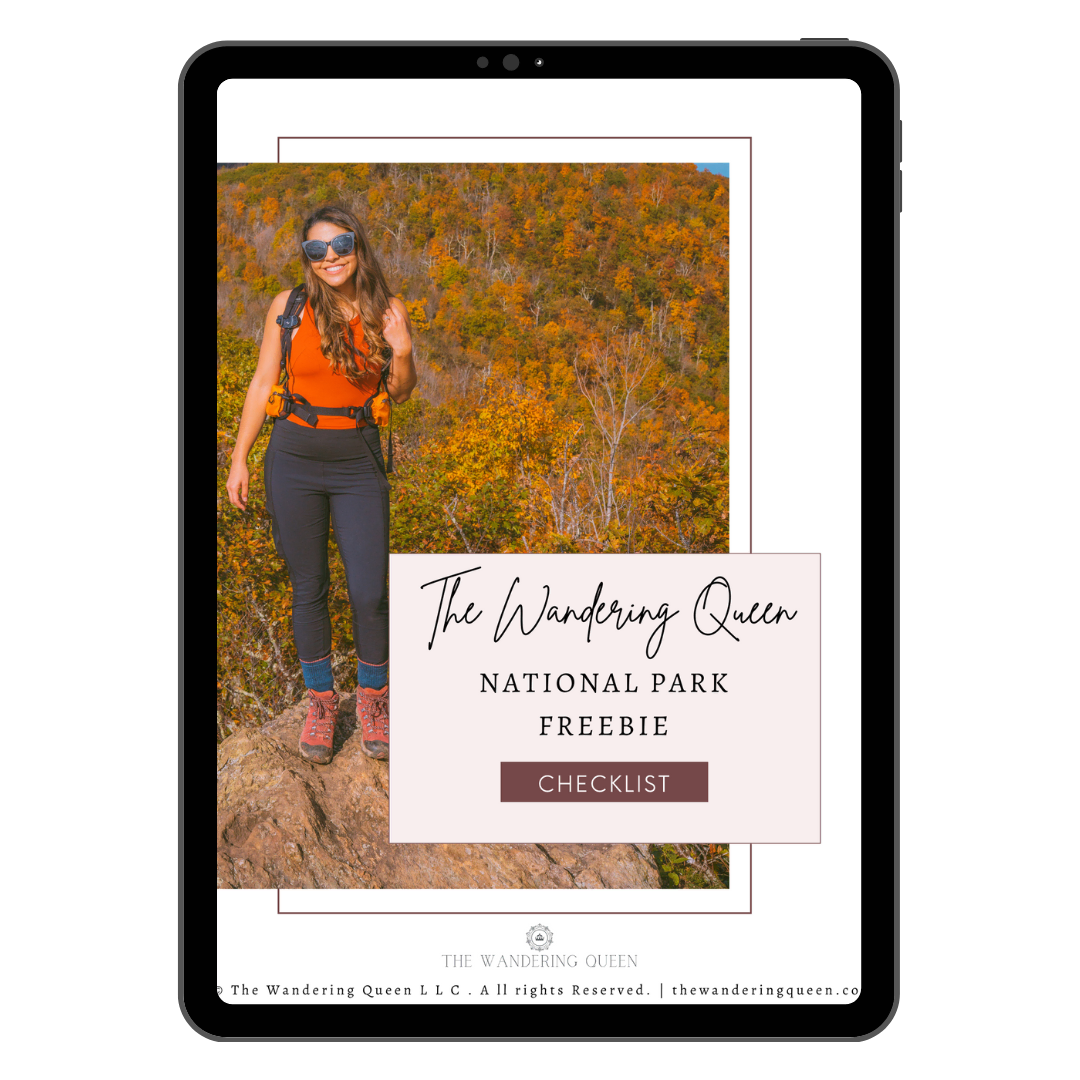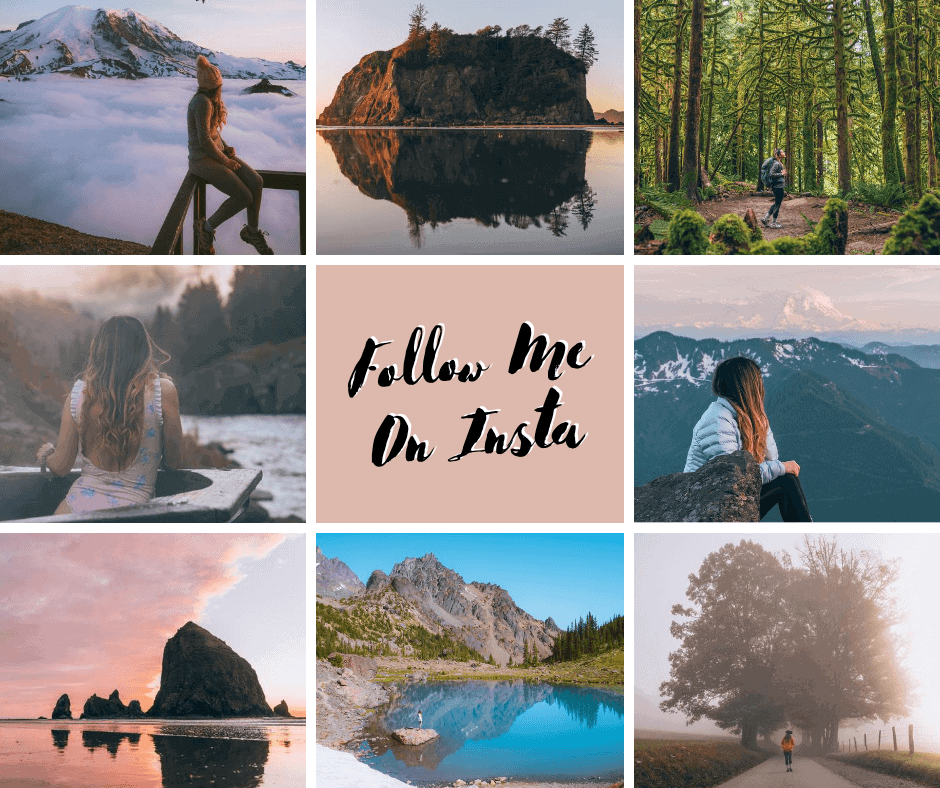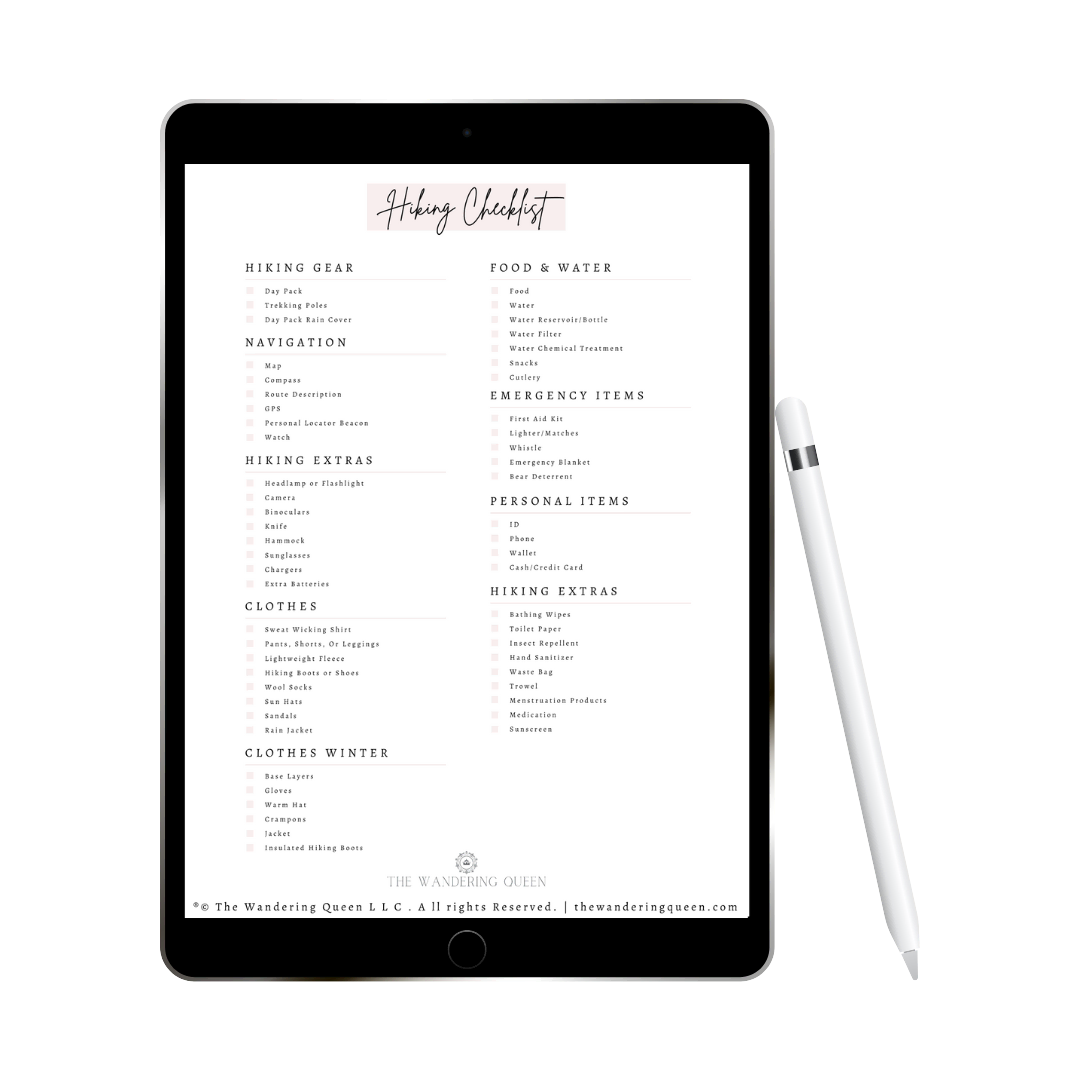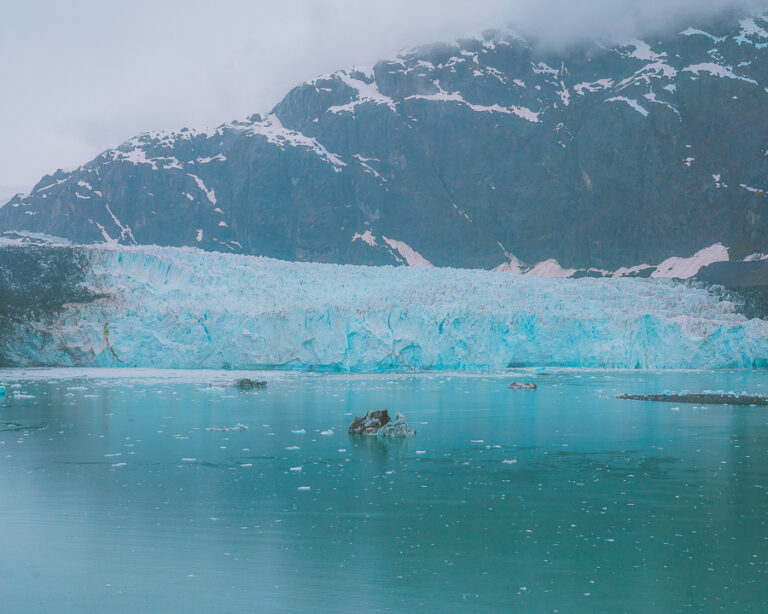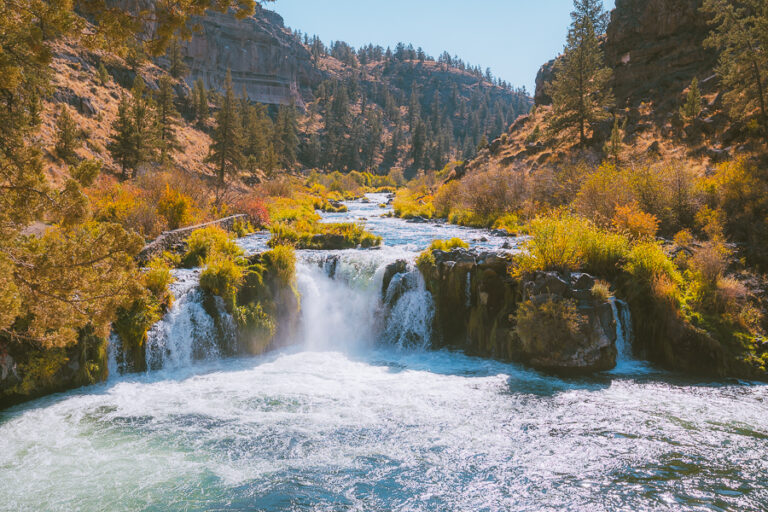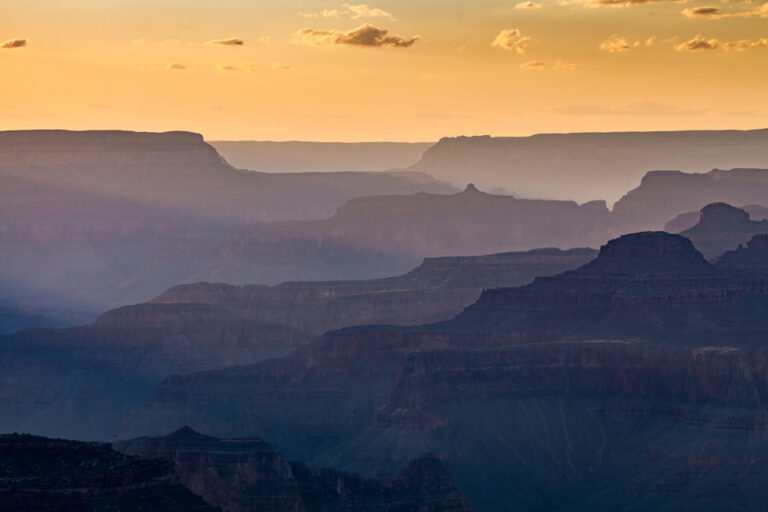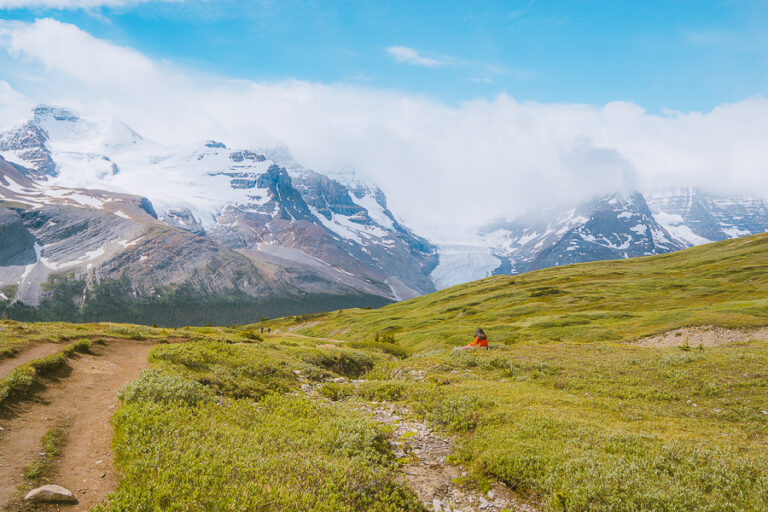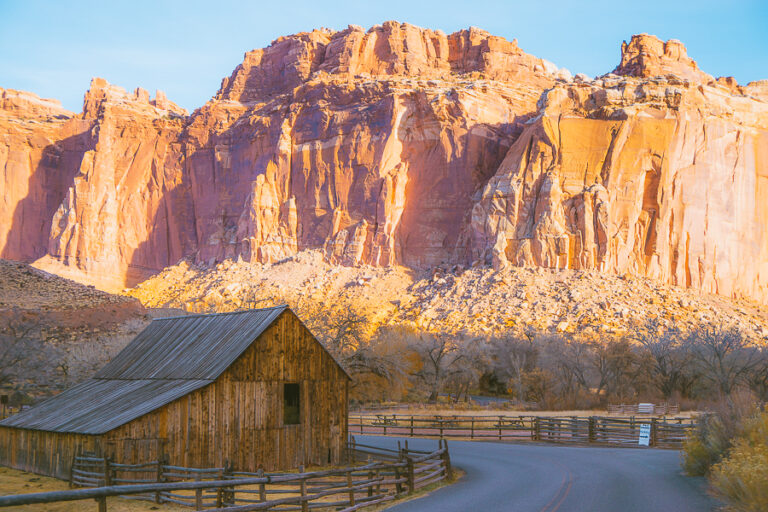13 Best National Parks to Visit in January
Thinking of visiting one or two national parks this January? The thing is, that’s in the thick of winter, and chances are, most parks are covered in snow and ice.
But it’s also less crowded, and you’ll likely save on accommodation and other expenses. Winter offers unbeatable scenery, challenging hiking trails, cross-country skiing, and unique moments. That said, here are the best national parks to visit in January.
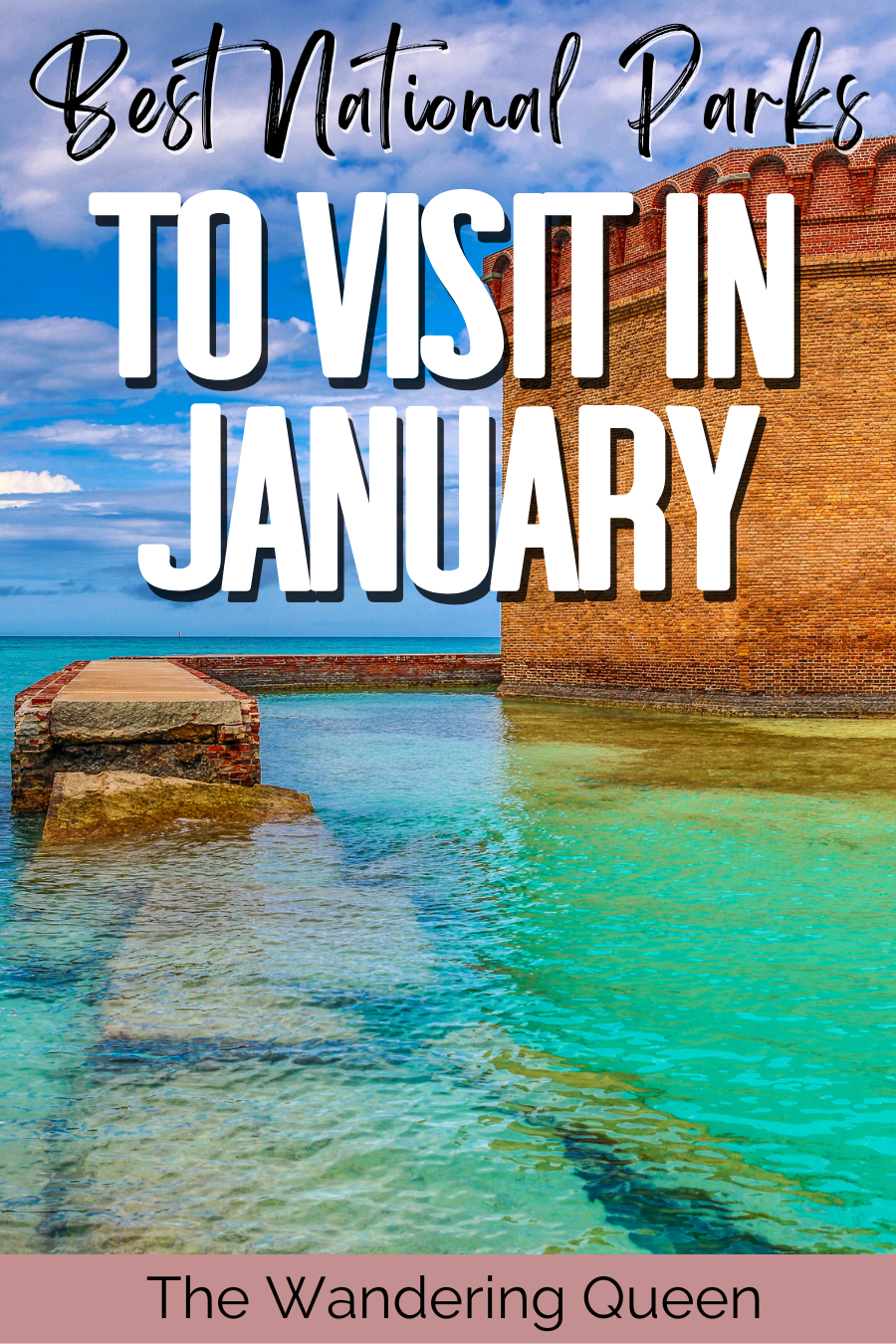
Disclosure: This post contains affiliate links. If you click one of them, I may receive a small commission (for which I am very grateful for) at no extra cost to you.
Pssst: Looking forward to more chilling adventures? Discover the best national parks to visit in winter.
Top 13 National Parks to Visit in January
Alrighty, grab all your winter backpacking essentials — we’re on our way to January’s must-visit national parks.
Death Valley National Park
Now, this is one of those parks that makes you feel like you’ve left planet Earth. Straddling eastern California and Nevada, it’s famous for its eerie ghost towns, colorful rocks, unique geology, and Martian-like landscapes.

Hint: Don’t miss out on this three-day Death Valley Itinerary.
Why Visit Death Valley National Park in January?

Winter is, without a doubt, the best time to visit Death Valley due to the extreme (and life-threatening) heat in summer. In January, the temperatures are nice and cool, so you can explore the entire place (yes, even at high elevations) without worrying about heat stroke.
Weather in January

As mentioned, you can expect cooler temperatures for this month, ranging from about 41°F to 68°F. It’s pleasant during the day, with very little rain.
How Many Days Do You Need?

It’s possible to see the majority of Death Valley’s main attractions in one or two days. But you can easily spend more days if you want to explore the park’s hidden gems.
Best Things to Do in Death Valley
Here are a few things you shouldn’t miss in January.
Watch the sunrise at Zabriskie Point

Zabriskie Point is a favorite spot to enjoy and capture the sunrise in Death Valley. The sun’s rays creep up slowly to reveal gorgeous splashes of vibrant brown colors left behind by volcanic eruptions.
Download my free Outdoor Photography Guide
Admire Artists Palette

Another photographer’s paradise, Artists Palette, is one of the most memorable things you’ll see here. Tucked behind an unassuming yellow landscape, a kaleidoscope of rainbow colors adorns the hills of Artists Palette.
Marvel at the Eureka Dunes
Eureka Dunes showcases a more modest palette, but it’s still a sight to behold. Being one of the tallest sand dunes in North America, it’s best to catch a glimpse of it during sunset to clearly see all the swirls, curves, and waves.
Hot Tip: Check out these 21 fun things to do in Death Valley.
Joshua Tree National Park
Straddling the cactus-dotted Colorado Desert and the Mojave Desert in California, Joshua Tree offers things you won’t see anywhere else.
Why Visit Joshua Tree National Park in January?

To see the Joshua Trees, of course! Here’s the twist: These aren’t really trees but rather succulents, a type of plant that stores water. In January, it’s less busy, easier to find campsites, and has mild temperatures.
Weather in January

While temperatures vary depending on where you are in the park, the average daily temperatures range between 37°F – 63°F.
How Many Days Do You Need?

One day in Joshua Tree is actually enough time to hike, photograph, view wildlife, climb rocks, and more.
Best Things to Do in Joshua Tree
Here are just a few of the best things to do in Joshua Tree.
Hike the Heart/Arch Rock Trail

In under 30 minutes, this flat out-and-back trail leads to a heart-shaped rock that’s especially mesmerizing at sunset. Then, continue on and scramble over a few rocks to see the Arch Rock.
Visit Cholla Cactus Garden
Take another easy trail to a very intriguing little spot along Pinto Basin Road. It’s a garden filled with cute“Teddy Bear” cholla cacti. They look soft and fluffy, but if you look closer, you’ll see that they’re simply cacti with hundreds of thorns.
Take Photos on the Barker Dam Trail

Get your camera ready once more as you make your way to the scenic Barker Dam. Visit in January during sunset to see an ethereal sight as the still water reflects the copperish mountains and clear blue skies above.
Rocky Mountain National Park
Rocky Mountain in Northern Colorado is one of the best national parks in winter. You’ll come across a spectacular mountain range, conifers, and sparkling lakes.
Why Visit Rocky Mountain National Park in January?
The Rocky Mountains are wonderful in January — it’s less crowded, and you’ll enjoy more winter activities. These include snowshoeing, ice climbing, skiing, and ice fishing. The scenery is out of this world, with the park transforming into a winter wonderland.
Weather in January
January is the park’s coldest month, with an average low of 13°F and a high of 31°F. Definitely pack a rain jacket, as this month receives 14 days of rainfall.
How Many Days Do You Need?
Three days is a good amount of time to experience numerous hiking trails, scenic drives, and other winter activities.
Best Things to Do at Rocky Mountain
Start packing those winter hiking boots and get ready for some snowy action in the Rocky Mountains.
Go Sledding at Hidden Valley
Fun fact: this is the only place inside Rocky Mountain National Park where sledding is allowed. Remember to bring your own sleds, tubes, or saucers, but there are rentals available in Estes Park.
Go Cross-Country Skiing
Beat the crowds at the downhill ski areas by cross country skiing. The best spots for that are Glacier Gorge, Bear Lake, and Trail Ridge Road. These trails are also ideal for snowshoeing.
Watch Winter Wildlife
The winter season provides a beautiful opportunity to spot wildlife, such as elk roaming the park meadows. Then, there’s the giant moose picking their way through the snow at Kawuneeche Valley. Lastly, watch out for the bighorn sheep on the cliffs of Fall River Road.
Yosemite National Park

Nestled in California’s Sierra Nevada mountains, Yosemite is as picturesque as they come. Known for its waterfalls, iconic vistas, and giant, ancient sequoia trees, it’s easy to see why Yosemite is a hit among nature lovers.
Why Visit Yosemite National Park in January?
January is a stellar time to explore Yosemite without the crowds. It’s serene, blanketed in snow, and beautifully frozen in time, making it one of the best national parks to visit in the winter.

Read Next: Best time to visit Yosemite National Park.
Weather in January
January is the peak winter season, with about seven days of rainfall and freezing average temperatures between 28°F and 48°F.
How Many Days Do You Need?
Two to four days should be enough to cover the most well-known sights and trails, including Glacier Point, Yosemite Falls, and Half Dome.
Best Things to Do in Yosemite
While you can read these 15 things to do in Yosemite, here’s a quick list of activities to do in January.
Visit Tunnel View
Admire the gorgeous Yosemite Valley from the most famous viewpoint in the park: Tunnel View. Drive through the Wawona Tunnel from the park’s South Entrance and take in the vistas. Come early in the morning or for a sunset picnic to avoid the rush.
Trek up Half Dome
Looking for a challenge? A trek up Half Dome via the John Muir Trail is strenuous, slippery, and has extreme elevation gain. It also includes rock climbing, takes 12 hours to complete, and yet is probably the best hike in the park. Note that you have to be well-prepared for this hike, and it requires a permit.
Stroll the Sentinel Meadow Cook’s Meadow Loop
Want a chilled and short alternative to the above hike? Try the Sentinel Meadow Cook’s Meadow Loop, which lasts only two miles and takes under an hour to complete. This trek takes you through the park’s lush greenery, allowing you to see the Yosemite Chapel and the crashing Lower Yosemite Falls, among other sights.
Yellowstone National Park

If there’s ever a park you should visit for epic natural scenery and natural wonders, it would be Yellowstone National Park. It’s located in the northwest corner of Wyoming and extends into Montana and Idaho.
Why Visit Yellowstone National Park in January?
You can see all the geological wonders and frolicking wildlife of Yellowstone with minimal crowds and open space. However, January is one of the best times to visit since the park’s abundant wildlife, powerful geysers, and colorful hot springs become even more visible and vibrant against the snow.
Weather in January
The average temperature in January is anywhere between 5°F and 25°F, with about 10 days of rain.
How Many Days Do You Need?
Spend at least three days here to get the most out of Yellowstone.
Best Things to Do in Yellowstone
Between the best hikes in Yellowstone and fun things to do, you won’t have a shortage of attractions and activities.
See the Grand Prismatic Spring
The Grand Prismatic Spring is the largest hot spring in the United States and the most beautiful, thanks to its colorful edges. In winter, microbes cause the edge of this geyser to turn a vibrant blue.
Swim in the Boiling River
Yes, this is not as crazy and dangerous as it sounds. Boiling River is a place near Mammoth Springs where you can relax and swim in a hot spring. It’s one of the few hot springs you can submerge in, giving you a moment to completely unwind.
Watch Old Faithful Erupt
Old Faithful is one of 500 geysers in the park. While it may not be the largest, it erupts more frequently than any of the other big geysers, making it a hit among visitors.
Pinnacles National Park

Pinnacles National Park is a peaceful escape in the east of the Salinas Valley in Central California.
Why Visit Pinnacles National Park in January?
This park is a hiker’s paradise, offering you a tapestry of outdoor adventures. While spring and fall are the best times to visit the park, you’d be just as impressed when going in January. If you’re into birdwatching or stargazing, definitely consider visiting this month.
Weather in January
Experiencing a total of six days of rain, this park’s average temperatures range from 30°F to 60.8°F.
How Many Days Do You Need?
One day is actually enough to experience most of Pinnacles if you pick up a few trails. But you can stay longer if you want to camp or birdwatch.
Best Things to Do at Pinnacles
Here are some of the best things to do in Pinnacles National Park.
Hike the Condor Gulch Trail

See the park in all its splendor, from sweeping views to iconic rock formations and lush vegetation. Hiking the Condor Gulch Trail also gives you a chance to spot yellow-faced California condors.
Do the Balconies Cave Hike
Here’s something that combines hiking and cave exploration. This exciting trail takes you through tight passageways and lets you climb over boulders to a scenic canyon and into the Balconies Cave.
Camp and Stargaze in the Pinnacles Campground

Why not spend a few nights in Pinnacles under the stars? Pinnacles Campground is located on the east side of the park and accessible via the East Entrance. It’s filled with 134 tent, group, and RV sites.
new on the shop
The Ultimate Camping Trip Planner!
Our camping trip planner helps you stay organized and plan all aspects of your adventure so that you can conquer new territories with ease.
Channel Islands National Park

This national park stands out from the rest. It consists of five remarkable islands off the Southern California coast.
Why Visit Channel Islands National Park in January?
The Channel Islands offer a wealth of natural and cultural experiences, and it’s no different in January. This is when you can see wildflowers in peak bloom. It’s also the best time for whale watching and spectacular sunsets.
Weather in January
The winters are mildly cool, with clear skies. Expect average highs of 63°F and lows of 56°F.
How Many Days Do You Need?
Two or three days are ideal to explore most of the park.
Best Things to Do at the Channel Islands
With five islands, there are plenty of things to do in the Channel Islands.
Go Snorkeling

Snorkeling is an obvious must-do on these islands. The best places to spot marine life are near Anacapa, Santa Barbara, and Santa Cruz.
Go Birdwatching
The Channel Islands are like the Galapagos of California, with plenty of bird species to spot. Birders can find seabirds like California brown pelicans around Santa Cruz, Santa Rosa, and San Miguel Islands. Then, you can spot land birds like the island scrub-jay on Prisoners Harbor or Scorpion Ranch in Santa Cruz.
Spot Marine Life
Stop by the Sea Lion Rookery in the Channel Islands National Marine Sanctuary on Santa Barbara Island to spot sea lions, dolphins, and blue whales.
Grand Canyon National Park

While almost all the parks on this list are in and around California, it’s time to discover Arizona’s pride and joy: the Grand Canyon. A park that needs no introduction.
Why Visit Grand Canyon National Park in January?
Enjoy fewer crowds, snowy trails, and less congested scenic drives. Stargazing is especially breathtaking in winter, and you can spot wildlife like ravens, mule deer, elk, and California condors.
Weather in January
The Grand Canyon receives a significant amount of snowfall in January, with average temperatures between 18 and 45°F.
How Many Days Do You Need?
It’s possible to spend just one day in the Grand Canyon, which includes viewpoints, South Rim trails, and archaeological wonders, but it’s always recommended to spend more time there.
Best Things to Do at the Grand Canyon
Here’s a quick list of things to do in the Grand Canyon.
See Tusayan Ruins
Nestled near the South Rim, you’ll find remnants of a small village, living quarters, and a plaza of the Puebloan people. These ancient ruins give insight into the park’s history, specifically around 1185–1225 AD, which is quite interesting.
Catch the Views at Mather Point

Mather Point is, without a doubt, the most popular viewpoint near the Grand Canyon Village. It offers expansive views of the canyon and is an unmissable stop while visiting the park.
Go to Yavapai Point
Want sweeping views of the canyon without the crowds? Mather Point can fill up quickly, so going to Yavapai Point is a better alternative. Perched on the edge of the canyon rim, it offers some of the best vantage points to see the Grand Canyon.
Dry Tortugas National Park

Dry Tortugas National Park is a remote destination in Florida’s Key West. Its crystal-clear waters, pristine coral reefs, and diverse marine life make it a great place to visit.
Why Visit Dry Tortugas National Park in January?
It’s a great time for bird watching and exploring the underwater world while enjoying mild and dry weather with fewer crowds.
Weather in January
Although mild, this is the park’s coldest month of the year, with five days of rainfall and average temperatures between 66°F and 74°F.
How Many Days Do You Need?
Plan to spend at least a full day since most visitors go on a day trip via the ferry.
Best Things to Do at Dry Tortugas
Try the following activities during your trip.
Camp in the Park
Think sleeping under the stars, with a warm tropical breeze and the rhythmic sound of the ocean waves. That’s how camping feels in the Dry Tortugas: completely isolated from civilization.
Go Snorkeling and Diving
The Dry Tortugas is a popular destination for snorkeling and diving thanks to its coral reefs and shipwrecks. So, it only makes sense to join a Key West snorkeling tour filled with hundreds of tropical fish and marine life.
Relax on the Beaches
A trip to Key West is not complete without beach hopping. And one of the best beaches happens to be here: Fort Jefferson. Boasting soft, powdery sand, crystal blue waters, and swaying palm trees, it’s a must-visit tropical paradise.
Claim your FREE Hiking Checklist
Ready to start hiking? Grab my free hiking checklist and never forget anything at home!
Bryce Canyon National Park

Known for its crimson-colored hoodoos, Utah’s Bryce Canyon National Park will take your breath away.
Why Visit Bryce Canyon National Park in January?
Well, there’s no wrong time to see these distinct spire-shaped rock formations. That said, in January, the hoodoos are covered in snow, there are fewer people around, and miles of stunning scenery await.
Weather in January
Expect freezing temperatures around 12°F to 35.6°F with a possibility of snow.

Pro Tip: Check out this Bryce Canyon winter guide.
How Many Days Do You Need?
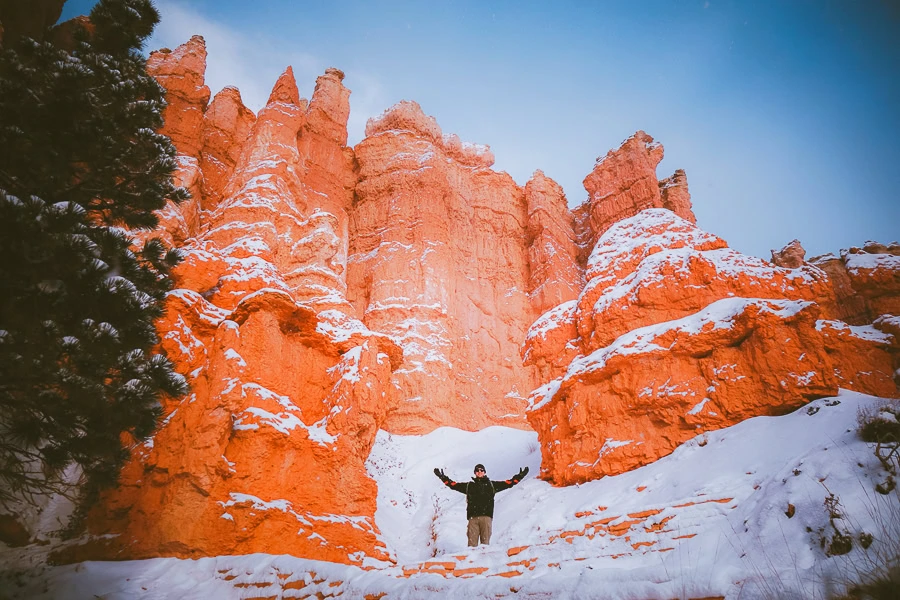
It depends on how much you want to see and do, but generally, you can see the park in one day.
Best Things to Do at Bryce Canyon
Don’t miss these Bryce Canyon activities.
Hike the Rim Trail
Go on one of the top hikes in the park that overlooks the hoodoos and connects to several viewpoints. While it takes nearly five hours, the well-maintained Rim Trail offers far too many epic lookouts to miss.
Go Stargazing
As an International Dark Sky Park, you shouldn’t miss an opportunity to witness the Milky Way in all its glory.
Go Horseback Riding
Experience that “Wild West” effect by doing a guided horseback ride through the area.
Admire the Bryce Amphitheater
The Bryce Amphitheater is where you’ll find the highest concentration of hoodoos on Earth!
Lassen Volcanic National Park
Located in northern California, this park is covered in acres of bubbling mud pots and hydrothermal sites like Bumpass Hell.
Why Visit Lassen Volcanic National Park in January?
Visit this month for all the snow and winter activities like snowshoeing, skiing, and snowboarding.
Weather in January
The park can receive up to 30 feet of snow and ten days of rain in winter. Average temperatures are roughly between 19°F and 43°F
How Many Days Do You Need?
Two or three days will let you explore the park’s main attractions and popular trails.
Best Things to Do at Lassen Volcanic
Don’t skip the following activities in Lassen Volcanic.
Drive the Scenic Highway
Drive along the 30-mile park highway for a tranquil drive with forests, lakes, mountain views, and volcanoes.
Hike the Bumpass Hell Trail
Taking about two hours, the Bumpass Hell Trail lets you see hydrothermal features like boiling mud pots and steaming pools.
Visit Sulphur Works
Visit the park’s most easily accessible hydrothermal area, which includes plopping mud pots, steamy vents, and other volcanic landforms.

Pro Tip: Save money and unlock endless adventures with the America the Beautiful Pass—your ticket to over 2,000 breathtaking national parks and federal lands for just $80 a year!
Big Bend National Park

Located in southwest Texas, the Big Bend is where the Chisos Mountains meet the Chihuahuan Desert.
Why Visit Big Bend National Park in January?
The milder winter weather and fewer crowds mean it’s prime time for hiking and mountain biking.
Weather in January
The weather is pleasantly mild, breezy, and usually sunny, with average highs of 65°F and lows of 36°F.
How Many Days Do You Need?
Visit for at least three days to experience the wilderness and see the top sights.
Best Things to Do at Big Bend
These are some of the top things to do in Big Bend.
Tackle a Few Hiking Trails

From easy walks to strenuous treks, hiking is the most exciting way to discover this park’s numerous scenic overlooks. Try the following trails:
- Rio Grande Village Nature Trail – 1-mile round trip (easy walk)
- Chisos Basin Loop Trail – 2.4 miles roundtrip (easy walk)
- Window Trail – 5.2 miles roundtrip (moderate hike)
- South Rim Trail – 12-14.5 miles roundtrip (strenuous hike)
Canoe on the Rio Grande River

Take a canoe trip along the Rio Grande River, offering lovely views and surroundings. The Rio Grande is one of North America’s largest rivers, winding along the border of Mexico.
See a Ghost Town
If you’re up for a spooky adventure, then do a tour of Terlingua Ghost Town just outside the park. Once a thriving mining community, you’ll explore the town’s old graveyards, browse shops, and tuck into Texas delights at the Starlight Theater Restaurant.
Arches National Park

Arches is an iconic National Park System in Utah known for its vast concentration of natural formations, from over 2,000 natural stone arches to giant balanced rocks.
Why Visit Arches National Park in January?
January is one of the best times to visit Arches, as it’s peaceful without the crowds and no scorching heat, plus the winter scenery is unbeatable.
Weather in January
It’s overcast or mostly cloudy most of the time, with an average low of 21°F and a high of 40°F.
How Many Days Do You Need?
Spending just one day in Arches should be enough to cover most sightseeing, hikes, and scenic drives.
Best Things to Do at Arches
Don’t skip these awesome things to do in Arches.
Go on the Arches Scenic Drive
Take a drive on a 19-mile paved road that leads off Highway 191 and all the way to the Devil’s Garden trailhead. You’ll enjoy many scenic stops, including the Balanced Rock and the La Sal Mountains viewpoint.
Hike to Delicate Arch

Hike to the Delicate Arch, the largest free-standing arch in the park, reaching 52 feet. Seen as a symbol of the state of Utah, this famous geological feature remains the park’s biggest draw.
Camp at Devil’s Garden
Despite how intense it sounds, camping in this area of the park is one of the most exhilarating things you can do. You can book one of 51 sites, starting at $25 per night, with amenities like grills, toilets, and picnic tables.
Read Next: Discover more hikes in Arches National Park.
Best National Park to Visit in January: Wrapped Up
As you can see, visiting National Parks in January can be an excellent idea for your next adventure, regardless of the fact that it’s winter. Whether you’re intrigued by the otherworldly Death Valley or want to relax in a Yellowstone Park hot spring, these options will knock you out of the park.
Read More: The 13 Best National Parks to Visit in February

